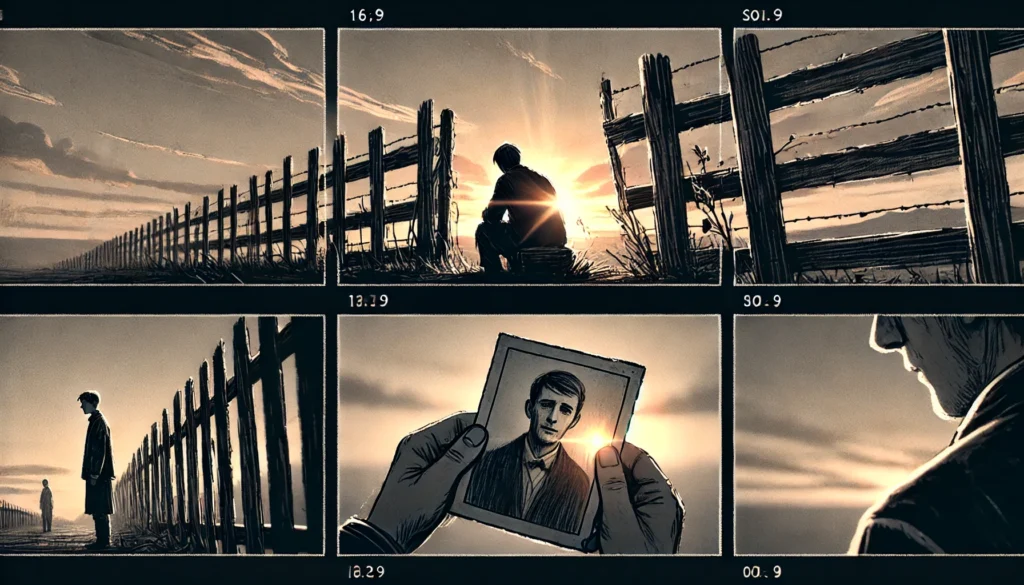
Discover the Best Book Recommendations Today
Finding great books can seem hard, but with the right help, you can find your next favorite. A good website for book recommendations can guide
The Official Website of E.B. Brown

Adapting short stories for film presents a unique set of challenges and triumphs. Unlike novels, which provide a more expansive narrative framework, short stories are typically compact, focusing on a single idea, character, or event. This brevity can make them difficult to translate into a feature-length film, where the need for structure, pacing, and depth often requires more content than a short story initially offers. Despite these challenges, many filmmakers have successfully adapted short stories, capturing their essence while expanding or reinterpreting them for the screen.
One of the primary challenges in adapting a short story into a film is expanding the narrative to fit the longer runtime of a movie. Short stories tend to be concise, leaving little room for secondary plots or detailed character development. This can leave filmmakers with the task of creating additional material—whether through character backstories, secondary characters, or new plot points—to make the story suitable for a feature-length film. For instance, in The Shawshank Redemption, based on Stephen King's novella Rita Hayworth and Shawshank Redemption, Frank Darabont expanded the source material by delving deeper into the lives of the characters, particularly focusing on the themes of hope and redemption, which were central to the novella but required a more developed narrative for the film.
Another challenge lies in maintaining the mood and tone of the original story. Short stories often leave much of the interpretation up to the reader, providing sparse details or ambiguous endings that can be difficult to convey through a more literal, visual medium. In adapting Brokeback Mountain, based on Annie Proulx's short story, Ang Lee preserved the emotional depth of the characters’ complex relationship by emphasizing the subtleties of the setting, the long pauses in conversation, and the small gestures between the characters. These choices helped translate the quiet emotional intensity of the short story into a film that retained its poignant, introspective mood.
Filmmakers must also contend with the nature of the short story’s structure. Many short stories are built around a singular twist, a powerful moment, or an ironic conclusion. Adapting these moments into a visual format without diminishing their impact can be a delicate task. For example, the short story The Secret Life of Walter Mitty by James Thurber, which focuses on a man’s daydreams, was adapted into a feature film that expanded on Mitty’s fantasies and adventures. The challenge was to balance the whimsy of the daydreams with the more grounded aspects of the character’s real life, allowing the fantastical elements to breathe while still serving the emotional journey of the character. The triumph of this adaptation lay in finding a way to visually represent the short story’s internal narrative in a way that engaged audiences on both an emotional and intellectual level.
The beauty of adapting short stories also lies in the creative freedom it offers filmmakers. Because the source material is often brief, filmmakers have more leeway to explore and experiment with the story. They can invent new sequences, expand on characters' motivations, or even shift the setting or time period, as long as the adaptation remains true to the heart of the original work. In Arrival, based on Ted Chiang’s short story Story of Your Life, director Denis Villeneuve took Chiang’s exploration of language and time and expanded it into a full narrative. He kept the philosophical underpinnings of the story but introduced a larger visual and emotional scope, weaving in elements of science fiction and personal tragedy. The triumph of this adaptation came from the way it stayed true to the essence of the short story’s themes while broadening its cinematic reach.
Ultimately, the adaptation of short stories to film requires a delicate balance between fidelity to the source material and the need for cinematic expansion. While filmmakers face the challenge of expanding and structuring short stories for a larger format, they also have the opportunity to explore new dimensions of the narrative, adding depth and visual flair that may not have been possible in the written form. Successful adaptations honor the spirit of the original work while transforming it into a fresh, immersive cinematic experience, allowing the core message of the story to resonate in a new and powerful way.

Finding great books can seem hard, but with the right help, you can find your next favorite. A good website for book recommendations can guide

Connecting with fellow book lovers can open up new worlds and build lasting friendships. A local Reading Community offers a sense of belonging and enriches

The rise of digital publishing has made E-book Platform solutions more popular. With many online e-book platforms out there, picking the right one is key.